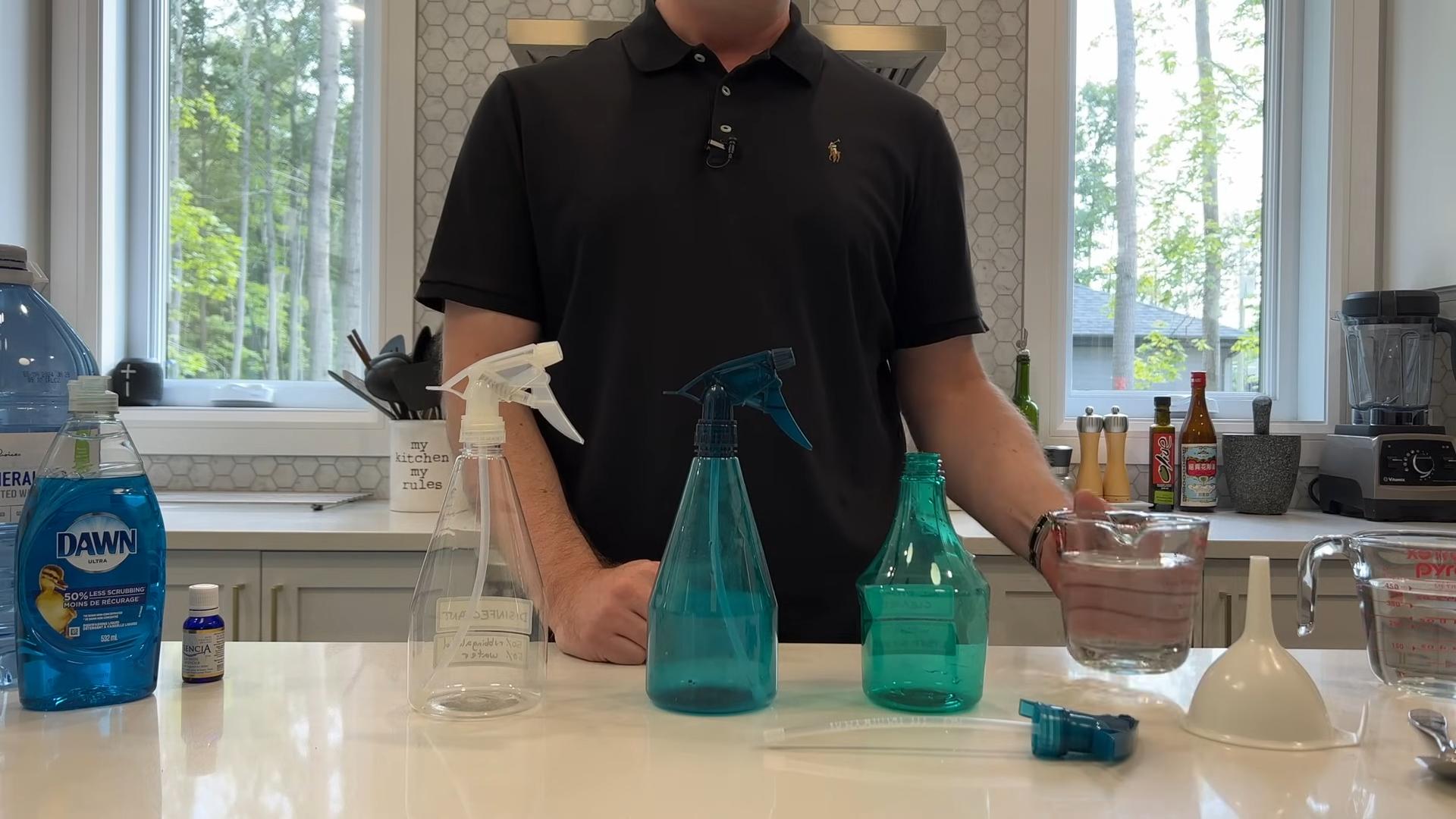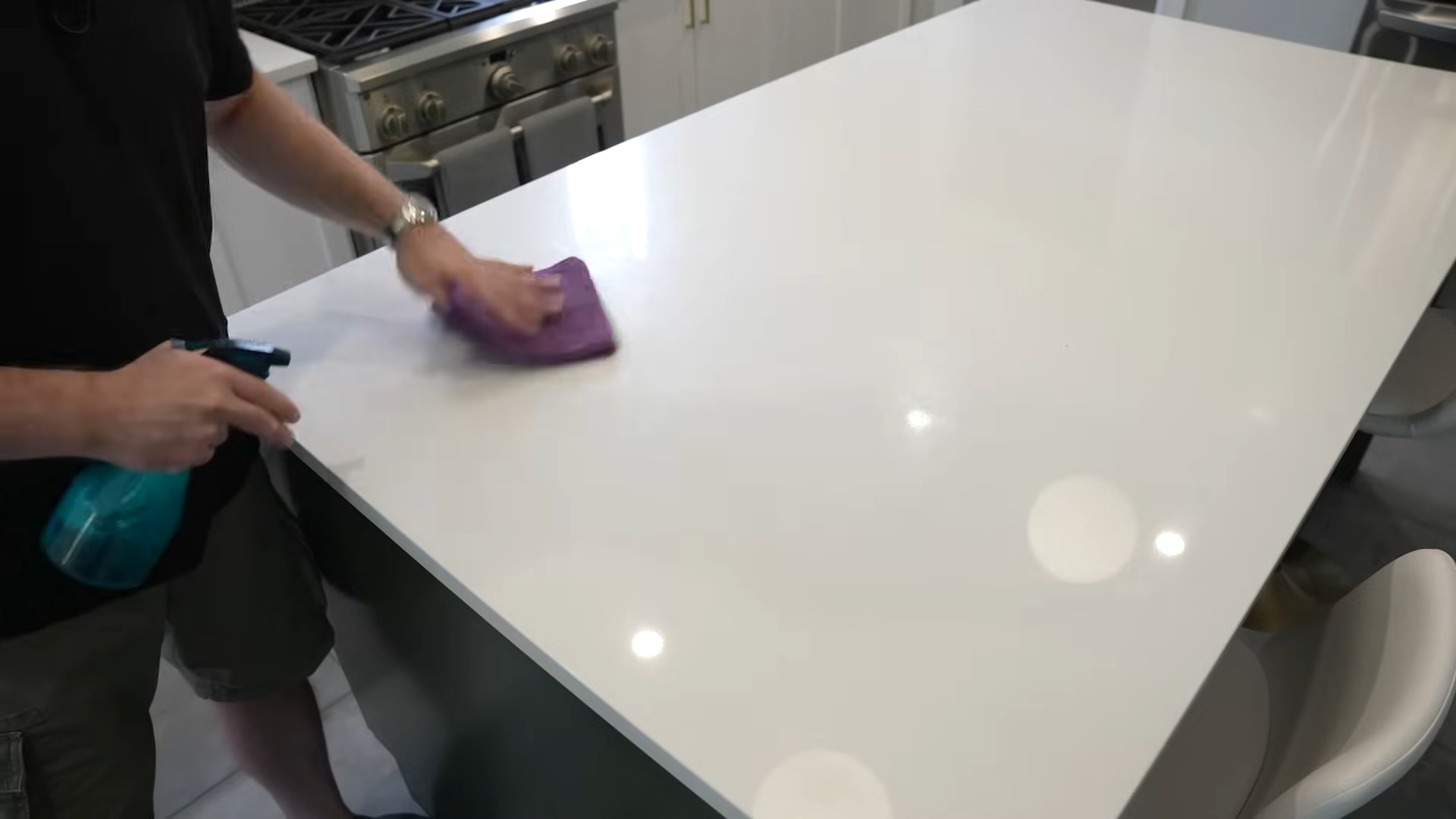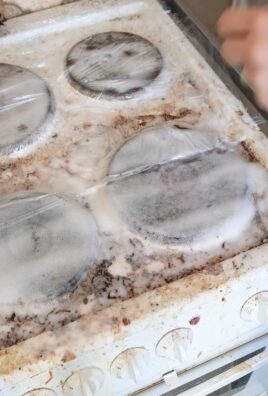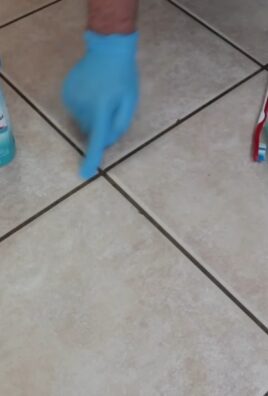Easy DIY Cleaning Recipes: Who doesn’t love a sparkling clean home? But let’s be honest, those store-bought cleaners can be harsh on our wallets and even harsher on the environment. I’m here to tell you that achieving a spotless home doesn’t require a trip to the chemical aisle! For generations, resourceful homemakers have relied on simple, natural ingredients to keep their homes fresh and clean. Think about it – our grandmothers cleaned their homes beautifully long before all these fancy products existed, often using ingredients straight from their pantries.
This tradition of natural cleaning isn’t just about saving money; it’s about creating a healthier living space for ourselves and our families. Many commercial cleaners contain volatile organic compounds (VOCs) that can irritate our lungs and trigger allergies. By switching to easy DIY cleaning recipes, we can significantly reduce our exposure to these harmful chemicals. Plus, you’ll be amazed at how effective these simple solutions can be!
In this article, I’m going to share some of my favorite and most effective DIY cleaning recipes using common household ingredients like vinegar, baking soda, and lemon. These recipes are not only incredibly easy to make, but they’re also incredibly versatile. Whether you’re tackling stubborn stains, greasy stovetops, or grimy bathrooms, I’ve got a DIY solution for you. Get ready to ditch the harsh chemicals and embrace the power of natural cleaning!

Easy DIY Cleaning Recipes: Ditch the Chemicals, Embrace the Natural!
Hey there, fellow cleaning enthusiasts! I’m so excited to share some of my favorite DIY cleaning recipes with you. I’ve been on a mission to reduce the number of harsh chemicals in my home, and these recipes have been a game-changer. Not only are they effective, but they’re also incredibly budget-friendly and eco-conscious. Let’s get started!
All-Purpose Cleaner: Your New Best Friend
This all-purpose cleaner is a workhorse. I use it on countertops, sinks, appliances, and even floors (with a little tweaking, which I’ll explain later). It’s safe for most surfaces, but always test in an inconspicuous area first, just to be sure.
What you’ll need:
* Spray bottle (16 oz)
* 1 cup white vinegar
* 1 cup water
* 10-20 drops of your favorite essential oil (lemon, lavender, tea tree, and eucalyptus are great choices)
Step-by-step instructions:
1. Gather your supplies: Make sure you have everything ready to go before you start. It makes the process so much smoother.
2. Combine vinegar and water: Pour the white vinegar and water into your spray bottle.
3. Add essential oils: Add your chosen essential oils. The essential oils not only add a pleasant scent but also have antibacterial and antiviral properties. I usually go for lemon because it smells so fresh and clean.
4. Shake well: Secure the spray nozzle and shake the bottle vigorously to combine all the ingredients.
5. Test and use: Before using it on a large surface, spray a small, hidden area to ensure it doesn’t cause any discoloration or damage. If all looks good, spray the cleaner onto the surface you want to clean and wipe it down with a clean cloth or sponge.
Important Note: Don’t use vinegar-based cleaners on natural stone surfaces like granite or marble, as the acidity can etch the stone.
Glass Cleaner: Streak-Free Shine Guaranteed
Say goodbye to streaks and hello to sparkling clean windows and mirrors! This glass cleaner is super simple and works like a charm.
What you’ll need:
* Spray bottle (16 oz)
* 2 cups water
* 1/4 cup white vinegar
* 1/2 teaspoon liquid dish soap (optional, but helps cut through grime)
Step-by-step instructions:
1. Prepare your bottle: Grab your spray bottle and make sure it’s clean.
2. Mix the ingredients: Pour the water, white vinegar, and dish soap (if using) into the spray bottle.
3. Shake gently: Close the bottle tightly and gently shake to combine the ingredients. Avoid creating too many bubbles if you’re using dish soap.
4. Spray and wipe: Spray the cleaner onto your windows or mirrors and wipe with a clean microfiber cloth. For best results, use a dry microfiber cloth for the final wipe to eliminate any streaks.
5. Enjoy the sparkle: Admire your streak-free shine!
Pro Tip: Use newspaper instead of a cloth for an even more streak-free finish. Just crumple up some newspaper and wipe the glass after spraying.
Toilet Bowl Cleaner: Keep it Fresh and Clean
Keeping the toilet bowl clean doesn’t have to involve harsh chemicals. This DIY toilet bowl cleaner is effective and uses ingredients you probably already have in your pantry.
What you’ll need:
* 1/2 cup baking soda
* 1 cup white vinegar
* 10-15 drops of tea tree essential oil (optional, for extra disinfecting power)
Step-by-step instructions:
1. Sprinkle baking soda: Sprinkle the baking soda into the toilet bowl, making sure to coat the entire surface.
2. Pour in the vinegar: Slowly pour the white vinegar over the baking soda. You’ll see it fizz – that’s the magic happening!
3. Let it sit: Allow the mixture to sit for at least 15-20 minutes. For tougher stains, you can let it sit for a few hours or even overnight.
4. Add essential oils (optional): If you’re using tea tree oil, add it to the bowl after the mixture has sat for a while.
5. Scrub and flush: Use a toilet brush to scrub the bowl thoroughly, paying attention to any stains or buildup. Flush the toilet to rinse.
Extra Tip: For a deeper clean, try pouring a cup of borax into the toilet bowl before adding the vinegar. Borax is a natural mineral that helps to disinfect and deodorize.
Oven Cleaner: Tackle Baked-On Grime
Cleaning the oven is one of those chores that everyone dreads, but it doesn’t have to be a nightmare. This DIY oven cleaner is surprisingly effective at removing baked-on grease and grime.
What you’ll need:
* 1/2 cup baking soda
* Water
* Spray bottle
* Scrubbing sponge or brush
Step-by-step instructions:
1. Empty the oven: Remove all racks and baking sheets from the oven.
2. Make a baking soda paste: In a bowl, mix the baking soda with enough water to form a thick paste.
3. Coat the oven: Spread the baking soda paste all over the inside of the oven, avoiding the heating elements. Be generous with the paste, especially on areas with heavy buildup.
4. Let it sit: This is the key! Let the paste sit for at least 12 hours, or even overnight. The longer it sits, the easier it will be to remove the grime.
5. Spray with vinegar: After the paste has sat, spray the inside of the oven with white vinegar. This will cause the baking soda to fizz, helping to loosen the grime even further.
6. Scrub and wipe: Use a scrubbing sponge or brush to scrub the oven, paying attention to any stubborn spots. Wipe away the paste and grime with a damp cloth. You may need to rinse the cloth several times.
7. Replace the racks: Once the oven is clean and dry, replace the racks and baking sheets.
Important Note: For self-cleaning ovens, consult your oven’s manual before using this method. Some manufacturers advise against using baking soda on self-cleaning ovens.
Dish Soap: Gentle and Effective
While you can buy natural dish soaps, making your own is surprisingly easy and allows you to control the ingredients completely. This recipe is gentle on your hands and effective at cutting through grease.
What you’ll need:
* 1 cup grated castile soap (like Dr. Bronner’s)
* 4 cups hot distilled water
* 1 tablespoon washing soda (not baking soda!)
* 10-15 drops of essential oil (lemon, grapefruit, or orange are great for degreasing)
Step-by-step instructions:
1. Dissolve the castile soap: In a large saucepan, combine the grated castile soap and hot distilled water. Heat over low heat, stirring constantly, until the soap is completely dissolved.
2. Add washing soda: Remove the saucepan from the heat and stir in the washing soda until it is dissolved.
3. Add essential oils: Add your chosen essential oils and stir to combine.
4. Let it cool: Allow the mixture to cool completely. It will thicken as it cools.
5. Transfer to a container: Pour the dish soap into a clean container with a pump or squirt top.
6. Use as usual: Use the dish soap as you would any other dish soap.
Important Note: Washing soda is different from baking soda. Washing soda is a stronger cleaner and should be handled with care. Wear gloves when using it.
Floor Cleaner: Safe for Most Surfaces
This floor cleaner is safe for most sealed floors, including tile, linoleum, and hardwood. Always test in an inconspicuous area first, especially on hardwood floors.
What you’ll need:
* Bucket
* 1 gallon warm water
* 1/4 cup white vinegar
* 5-10 drops of essential oil (optional, for fragrance)
Step-by-step instructions:
1. Gather your supplies: Make sure you have a bucket, warm water, white vinegar, and essential oils (if using).
2. Mix the ingredients: In the bucket, combine the warm water, white vinegar, and essential oils (if using).
3. Mop the floor: Dip a mop into the cleaning solution and wring out the excess water. Mop the floor in sections, rinsing the mop frequently.
4. Dry the floor: Allow the floor to air dry, or use a clean, dry mop to dry it.
Important Note: For hardwood

Conclusion
So, there you have it! Ditching the harsh chemicals and embracing these easy DIY cleaning recipes isn’t just about saving money; it’s about creating a healthier, happier home for you and your loved ones. From the invigorating citrus scent of the all-purpose cleaner to the gentle power of the laundry detergent, these recipes offer a natural and effective alternative to store-bought products.
Why is this a must-try? Because you’re taking control of what goes into your cleaning products. You know exactly what ingredients you’re using, avoiding potentially harmful chemicals and allergens. Plus, you’re contributing to a more sustainable lifestyle by reducing plastic waste and minimizing your environmental impact. It’s a win-win!
But the beauty of DIY lies in its adaptability. Feel free to experiment with different essential oils to create your signature scent. Lavender, tea tree, eucalyptus – the possibilities are endless! For a stronger degreaser, add a bit more borax to your all-purpose cleaner. If you have hard water, consider using distilled water in your recipes to prevent mineral buildup. You can even infuse your vinegar with citrus peels for an extra boost of cleaning power and a delightful fragrance.
Don’t be afraid to get creative and tailor these recipes to your specific needs and preferences. Remember, the goal is to create cleaning solutions that are both effective and enjoyable to use.
We’re confident that once you try these easy DIY cleaning recipes, you’ll never go back to store-bought cleaners. The satisfaction of knowing you’re cleaning your home with safe, natural ingredients is truly rewarding.
So, what are you waiting for? Gather your ingredients, put on your favorite music, and get ready to transform your cleaning routine. We encourage you to try these recipes and share your experiences with us. Let us know which variations you tried, what scents you loved, and how these DIY cleaners worked for you. Your feedback will not only help us improve these recipes but also inspire others to embrace the power of natural cleaning. Share your tips, tricks, and photos on social media using #DIYCleaningRecipes – we can’t wait to see your creations! Let’s build a community of eco-conscious cleaners, one homemade solution at a time. Embrace the power of **DIY cleaning recipes** and experience the difference for yourself!
Frequently Asked Questions (FAQ)
Q: Are these DIY cleaning recipes as effective as store-bought cleaners?
A: In many cases, yes! The effectiveness of these DIY cleaning recipes depends on the specific task and the ingredients used. For general cleaning, disinfecting, and degreasing, these recipes can be just as effective, if not more so, than many store-bought cleaners. Vinegar, baking soda, and essential oils possess powerful cleaning properties. However, for heavily soiled or specialized cleaning tasks, you might need to adjust the recipes or consider a commercial product. It’s always a good idea to test the cleaner on a small, inconspicuous area first to ensure it doesn’t damage the surface. Remember, the key is to use the right cleaner for the right job.
Q: What are the best essential oils to use in DIY cleaning recipes?
A: The best essential oils for DIY cleaning recipes are those with antibacterial, antiviral, and antifungal properties. Some popular choices include:
* **Tea Tree Oil:** Known for its strong antiseptic and antifungal properties, making it ideal for disinfecting surfaces.
* **Lavender Oil:** Offers a calming scent and has antibacterial properties, perfect for all-purpose cleaners and laundry detergents.
* **Lemon Oil:** A powerful degreaser and disinfectant with a refreshing citrus scent.
* **Eucalyptus Oil:** Effective against germs and viruses, and its invigorating scent can help clear congestion.
* **Peppermint Oil:** Has antibacterial and antifungal properties and a refreshing scent.
When using essential oils, always dilute them properly and avoid direct contact with skin and eyes. Also, be mindful of pets, as some essential oils can be harmful to them.
Q: How long do these DIY cleaning recipes last?
A: The shelf life of these DIY cleaning recipes depends on the ingredients used. Generally, cleaners containing water should be used within a few weeks to prevent bacterial growth. Cleaners containing vinegar or alcohol have a longer shelf life due to their preservative properties.
* **All-Purpose Cleaner (with water):** 2-3 weeks
* **All-Purpose Cleaner (with vinegar):** 1-2 months
* **Laundry Detergent:** 1-2 months
* **Glass Cleaner:** 2-3 months
It’s always a good idea to label your DIY cleaners with the date you made them. If you notice any changes in color, smell, or consistency, discard the cleaner.
Q: Are these DIY cleaning recipes safe for all surfaces?
A: While these DIY cleaning recipes are generally safe for most surfaces, it’s essential to test them on a small, inconspicuous area first. Avoid using vinegar on natural stone surfaces like marble or granite, as it can etch the stone. Baking soda can be abrasive, so use it with caution on delicate surfaces. Always check the manufacturer’s instructions for cleaning specific surfaces.
Q: Can I use these DIY cleaning recipes if I have allergies or sensitivities?
A: If you have allergies or sensitivities, it’s crucial to carefully review the ingredients in these DIY cleaning recipes. Avoid using ingredients that you know you are allergic to. You can also substitute ingredients with alternatives that are less likely to cause a reaction. For example, if you’re allergic to citrus, you can use a different essential oil or omit it altogether. Always wear gloves when cleaning to protect your skin. If you experience any adverse reactions, discontinue use immediately.
Q: How do I store these DIY cleaning recipes?
A: Store your DIY cleaning recipes in clean, airtight containers. Glass bottles or spray bottles are ideal for liquid cleaners. Label each container clearly with the name of the cleaner and the date it was made. Store the cleaners in a cool, dark place away from direct sunlight and heat. Keep them out of reach of children and pets.
Q: Can I use these DIY cleaning recipes in my washing machine?
A: Yes, you can use the DIY laundry detergent recipe in your washing machine. Follow the instructions in the recipe and use the appropriate amount of detergent for your load size. Be sure to check your washing machine’s manual for any specific recommendations or restrictions.
Q: What if I don’t have all the ingredients listed in the recipes?
A: Don’t worry if you don’t have all the ingredients! You can often substitute ingredients with similar alternatives. For example, if you don’t have borax, you can use washing soda instead. If you don’t have a specific essential oil, you can use a different one or omit it altogether. The key is to experiment and find what works best for you.
Q: Are these DIY cleaning recipes environmentally friendly?
A: Yes, these DIY cleaning recipes are generally more environmentally friendly than store-bought cleaners. They use natural, biodegradable ingredients and reduce the need for plastic packaging. By making your own cleaners, you’re contributing to a more sustainable lifestyle and reducing your environmental impact.
Q: Where can I find the ingredients for these DIY cleaning recipes?
A: Most of the ingredients for these DIY cleaning recipes can be found at your local grocery store, health food store, or online. Common ingredients like vinegar, baking soda, and essential oils are widely available. You may need to visit a specialty store or order online for ingredients like borax or washing soda.





Leave a Comment